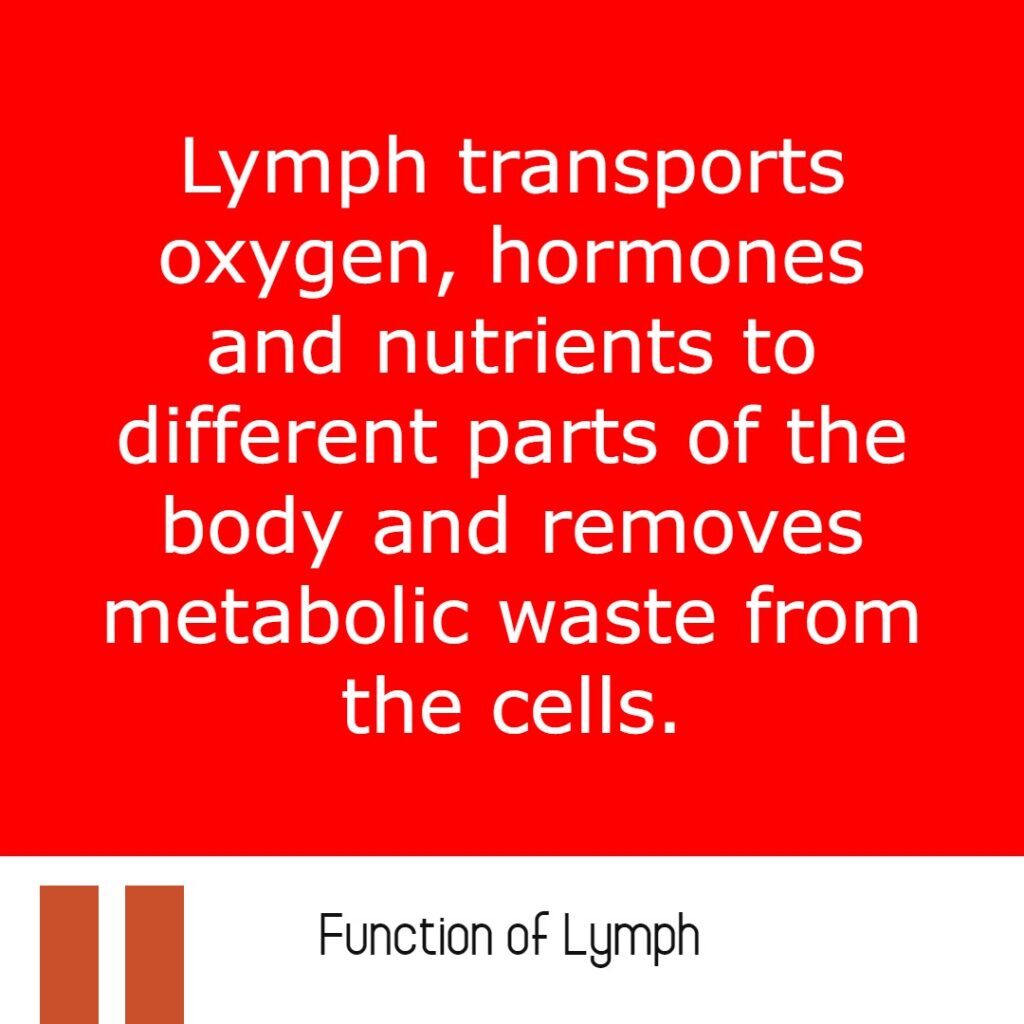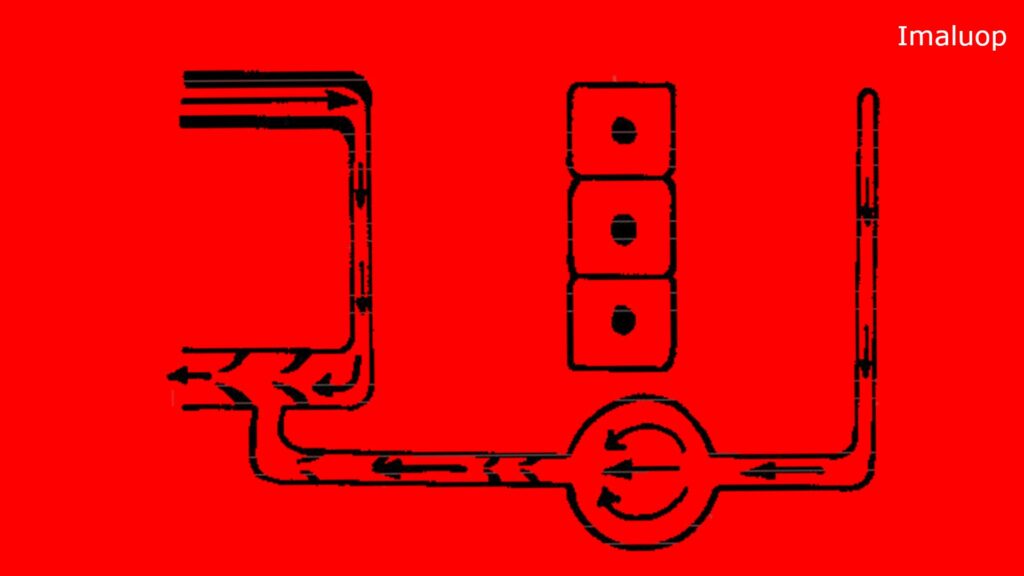Function of lymphatic system: In the lymphatic system lymph vessels and lymphoid organs have a great contribution in our immunity system. Besides immune function it has several other functions. It collects tissue fluid from intercellular space and filters it then it goes back to intercellular space. It carries an immune system cell to fight against outer microbes.
In the digestive tract absorption of fat occurs. Lymph helps to absorb fat from the digestive tract in the form of chylomicrons. So lymph has a great contribution in the immune system of our body, absorption of fat, removing extra fluid from interstitial space.
Immune Function:
Lymph flow transports the agent of the immune system, like antibody, lymphocyte. Lymph helps to reach the immune system cell to each part of the body. It is a medium for immune system action in our body. Without a liquid medium it is difficult to reach all immune system cells immediately after an infection.
Lymph helps the immune system cell to reach quickly at the place of infection. Lymphocyte accumulated in lymph nodes to filter the fluid inside lymph vessels. In lymph nodes, the external enemy of our body is destroyed by different immune system cells. In lymph nodes dendritic cells present.

Plasma cells present in lymph nodes responsible for antibody action. They help to mark the external enemy cells. Dendritic cells trigger adaptive immunity. Lymph also carry the antigen from intercellular space. Macrophages present at lymph nodes destroy foreign microbes. So lymph has a great contribution in adaptive immunity.
But this transport function also has a negative side. Lymph can transport cancer cells also. So it can spread cancer. Cancerous cells can spread throughout the body tissues from one tissue to another distant tissue via lymph flow.
Maintain the tissue fluid homeostasis:
In capillaries blood gives pressure on the capillary wall. Due to this hydrostatic pressure some fluid comes out of capillaries and goes into intracellular space. This fluid among the cells is known as interstitial fluid. Tissues are bathed in this fluid. Tissue can take its necessary materials from this fluid.
Oxygen and other required materials go into tissue fluid from blood capillaries. Cells take oxygen and nutrients from this fluid. Cell excrete waste materials due to metabolic activity. These waste materials go to tissue fluid and from there it passes into capillaries. So tissue fluid has a great contribution to reach all required materials to all cells and removal of waste products of cells.

During inflammation a high amount of fluid comes out of blood capillaries. Protein leaks from blood capillaries into interstitial space. So due to osmotic pressure fluid comes out of capillaries. Sometimes different reasons extra fluid accumulated in between the cells. This extra intercellular fluid should be removed. If extra tissue fluid accumulates continuously then the tissue starts to swell.
Lymph helps to remove this extra fluid. Lymph establishes the homeostasis of interstitial fluid. Lymph capillaries in between the tissues collect extra fluid and drain into more thicker collecting lymphatic. Then the extra interstitial fluid drains into lymph nodes. In lymph nodes filtration takes place.
Lymph act as reservoirs of tissue fluid. If fluid excess in interstitial space then it goes to the lymphatic system from interstitial space. If interstitial space lacks tissue fluid then tissue fluid comes back from lymphatic system to interstitial space. In this way the lymphatic system maintains tissue fluid homeostasis.
Absorption of fat:
In our digestive tract lipid digest and break down into fatty acids and glycerol. Fatty acids absorption in small intestine occurs with the help of lymph. In small intestine fingers like villi present. In villi lymph capillaries present. Lymph capillaries present at villi are known as lacteal. Lacteal absorb fat from small intestine.

Lacteal absorb fat as chylomicrons. After digestion fat is emulsified then fatty acids convert into micelles. Micelles enter into epithelial cells of small intestine. Inside the epithelial cells with the help of Golgi micelles turn into lipoprotein, called as chylomicrons.
Chylomicrons then exit from epithelial cells and absorbed by lacteal present at villi. More than ninety five percent fatty acids transport by lymph. Since lymph absorbs a major amount of fat, if lymph disable to perform this function properly then malnutrition is observed.
Read More: 30 most important topics on biology
Reference: Function of lymph
Hi Everyone!!! Welcome to Imaluop. Imaluop always try to learn some new and he want to share to other people. Here we will try to learn various topics on Science, specially on Biological Sciences.
